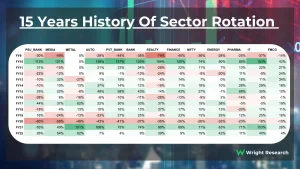
Let’s be honest—forex markets are messy. Trillions sloshing around daily, exchange rates bouncing like a ping-pong ball, and liquidity that can vanish faster than a magician’s coin. But what if CBDCs—central bank digital currencies—could change the game? Here’s the deal: they might not just tweak forex liquidity… they could flip it on its head.
The Forex Liquidity Puzzle (And Where CBDCs Fit In)
Forex liquidity is all about how easily currencies can be bought or sold without causing wild price swings. Right now, it’s a patchwork—banks, hedge funds, even retail traders all jostling for position. CBDCs? They’re like injecting a straight shot of espresso into this system. Here’s why:
- Direct central bank access: No more waiting for commercial banks to intermediate. Imagine swapping your digital euro for a digital dollar… instantly.
- 24/7 settlement: Forex markets never sleep, but settlements do. CBDCs could keep the party going round-the-clock.
- Fewer middlemen: Less friction means tighter spreads—goodbye to some of those sneaky hidden costs.
The Bright Side: Potential Liquidity Boosts
1. The “Atomic Swap” Dream
Picture this: two CBDCs exchanging hands simultaneously on a blockchain. No settlement risk, no waiting days for funds to clear. That’s atomic swaps—and they could make forex trades feel like passing a basketball rather than orchestrating a bank heist.
2. Small Players, Bigger Voice
Right now, if you’re not a big bank, good luck getting the best forex rates. CBDCs might level the field—smaller businesses could access near-wholesale liquidity without jumping through hoops.
3. Cross-Border Payments on Steroids
Ever tried sending money internationally? It’s like mailing a letter via carrier pigeon. CBDCs could turn those 3-5 day waits into near-instant transfers—which means more liquidity sloshing back into markets faster.
The Thorny Bits: Risks and Headaches
Not so fast—it’s not all rainbows. CBDCs come with their own baggage when it comes to forex liquidity:
- Fragmentation fears: What if every country rolls out their own CBDC with different rules? We might end up with a Tower of Babel situation.
- Bank disintermediation: If everyone holds CBDCs directly, do commercial banks lose their role in forex markets? That could… complicate things.
- Volatility spikes: Easier trading might mean faster capital flight during crises. Think flash crashes, but with national currencies.
Real-World Experiments (And What They’re Showing)
China’s digital yuan is already being tested for cross-border deals. The Bahamas’ Sand Dollar? It’s tiny, but it’s proving CBDCs can work in island economies. Meanwhile, the Eurosystem’s digital euro project is wrestling with how to handle forex implications. Early takeaways:
| Project | Forex Impact Observed |
| China’s e-CNY | Reduced USD dependency in Asia trades |
| Bahamas Sand Dollar | Faster USD conversions for tourism |
| ECB Digital Euro | Potential EUR liquidity boost in Africa |
The Big Question: Who Controls the Pipes?
Here’s where it gets political. If CBDCs make forex transactions smoother, central banks gain huge influence over currency flows. Will they:
- Act like referees, keeping markets fair?
- Or become players, using CBDCs to steer exchange rates?
Honestly, we don’t know yet. But power shifts in forex markets tend to ripple outward—ask anyone who lived through the end of Bretton Woods.
Final Thought: A Double-Edged Sword
CBDCs won’t just tweak forex liquidity—they’ll redefine what liquidity even means. More efficiency? Sure. New risks? Absolutely. One thing’s clear: the days of treating forex like a 20th-century game are numbered.








